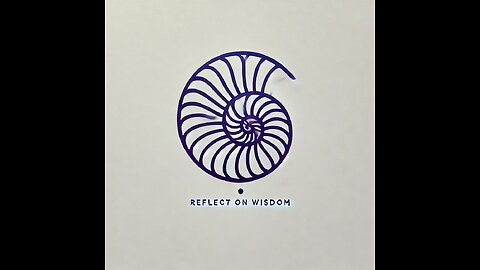
"The Grande Vision" Series
9 videos
Updated 6 months ago
A summative approach to contextualizing and understanding our era, with a vision toward the foundations of greatness.
-
1 - "The Grande Filter"
 Video ArchiveThe mind’s duality—between the limbic system’s primal instincts and the neocortex’s higher functions—provides a universal framework for understanding personal behavior, societal dynamics, and cultural evolution, enabling a path toward harmony and fulfillment. This video explores the fundamental idea of achieving a great society by understanding the function of the human mind. It highlights the contrast between the limbic system, responsible for primal emotions like fear and anger, and the neocortex, associated with creativity, rational thinking, and the fullness of human potential. The author advocates for using this understanding as a lens to analyze personal behavior, societal dynamics, and historical trends, emphasizing that a balanced and healthy mind leads to greater societal outcomes. The metaphor of a sphere, rather than a hierarchical structure, is introduced to illustrate the interconnectedness and complexity of these mental states, offering a foundation to build a shared understanding of human potential and progress. Table of Contents Goal: Building a Great Society Safe, prosperous, and fulfilling communities. The role of historical and personal efforts. Core Concept: The Function of the Mind Limbic system: primal emotions and stress responses. Neocortex: creativity, rationality, and higher mental states. Key Metaphor: The Mind as a Sphere Rejects the "upstairs vs. downstairs brain" model. Emphasizes interconnected complexity. Application of the Framework Analyzing individual and societal behavior. Understanding history and cultural dynamics. The Role of Arts and Complexity Arts as expressions of higher mental states. Increasingly complex emotions and experiences. Call to Action Use this framework as a foundation to achieve personal and collective growth. ----------------------------- Full Series Playlist: https://rumble.com/playlists/P-bz7OLpvgo19 views
Video ArchiveThe mind’s duality—between the limbic system’s primal instincts and the neocortex’s higher functions—provides a universal framework for understanding personal behavior, societal dynamics, and cultural evolution, enabling a path toward harmony and fulfillment. This video explores the fundamental idea of achieving a great society by understanding the function of the human mind. It highlights the contrast between the limbic system, responsible for primal emotions like fear and anger, and the neocortex, associated with creativity, rational thinking, and the fullness of human potential. The author advocates for using this understanding as a lens to analyze personal behavior, societal dynamics, and historical trends, emphasizing that a balanced and healthy mind leads to greater societal outcomes. The metaphor of a sphere, rather than a hierarchical structure, is introduced to illustrate the interconnectedness and complexity of these mental states, offering a foundation to build a shared understanding of human potential and progress. Table of Contents Goal: Building a Great Society Safe, prosperous, and fulfilling communities. The role of historical and personal efforts. Core Concept: The Function of the Mind Limbic system: primal emotions and stress responses. Neocortex: creativity, rationality, and higher mental states. Key Metaphor: The Mind as a Sphere Rejects the "upstairs vs. downstairs brain" model. Emphasizes interconnected complexity. Application of the Framework Analyzing individual and societal behavior. Understanding history and cultural dynamics. The Role of Arts and Complexity Arts as expressions of higher mental states. Increasingly complex emotions and experiences. Call to Action Use this framework as a foundation to achieve personal and collective growth. ----------------------------- Full Series Playlist: https://rumble.com/playlists/P-bz7OLpvgo19 views -
2 - The Bell-Curve
 Video ArchiveThe bell curve, or normal distribution, is a statistical model illustrating that most traits fall within a standard range, with extraordinary achievements and deficits represented by outliers at the tails, offering a lens to understand human diversity and excellence. This video introduces the concept of the bell curve as a foundational framework for understanding human variation and its applications across various fields. The bell curve, or normal distribution, is described as a statistical model that captures the spread of traits, behaviors, or characteristics within a population, such as height, intelligence, or talent. It emphasizes that while most individuals fall within a standard range of "normal," the extraordinary—both exceptional and deficient—exist at the tails. The discussion highlights the importance of outliers in shaping human achievement and innovation, as they represent the individuals who drive progress, creativity, and excellence in various domains. Table of Contents Introduction to the Bell Curve Definition: Statistical model of normal distribution. Common applications: Height, IQ, talent. Structure of the Bell Curve Majority in the middle: 85% within one or two standard deviations. Outliers at the tails: Exceptional and deficient traits. Significance of Outliers Upper tail: Geniuses, innovators, Olympic athletes. Lower tail: Traits opposite to exceptional abilities. Implications of the Bell Curve Understanding human variation. Framework for celebrating extraordinary achievements. Next Steps Application of the bell curve in analyzing societal and individual behavior. ----------------------------- Full Series Playlist: https://rumble.com/playlists/P-bz7OLpvgo10 views
Video ArchiveThe bell curve, or normal distribution, is a statistical model illustrating that most traits fall within a standard range, with extraordinary achievements and deficits represented by outliers at the tails, offering a lens to understand human diversity and excellence. This video introduces the concept of the bell curve as a foundational framework for understanding human variation and its applications across various fields. The bell curve, or normal distribution, is described as a statistical model that captures the spread of traits, behaviors, or characteristics within a population, such as height, intelligence, or talent. It emphasizes that while most individuals fall within a standard range of "normal," the extraordinary—both exceptional and deficient—exist at the tails. The discussion highlights the importance of outliers in shaping human achievement and innovation, as they represent the individuals who drive progress, creativity, and excellence in various domains. Table of Contents Introduction to the Bell Curve Definition: Statistical model of normal distribution. Common applications: Height, IQ, talent. Structure of the Bell Curve Majority in the middle: 85% within one or two standard deviations. Outliers at the tails: Exceptional and deficient traits. Significance of Outliers Upper tail: Geniuses, innovators, Olympic athletes. Lower tail: Traits opposite to exceptional abilities. Implications of the Bell Curve Understanding human variation. Framework for celebrating extraordinary achievements. Next Steps Application of the bell curve in analyzing societal and individual behavior. ----------------------------- Full Series Playlist: https://rumble.com/playlists/P-bz7OLpvgo10 views -
3 - "Low-Resolution" Thinking
 Video Archive"Low resolution" refers to oversimplified thinking that fails to handle complexity, often leading to generalized and reductive views, whereas nuanced understanding requires cognitive structures capable of processing greater detail and complexity. This video explains the concept of "low resolution" or "painting with broad strokes" as a way of oversimplifying complex subjects, often failing to account for the intricacies of human behavior and diversity. While simplifying information is a natural and useful cognitive tool, excessive simplification leads to an inability to handle complexity, resulting in generalized and often inaccurate conclusions. The discussion highlights how higher intelligence and more developed cognitive structures allow for nuanced thinking, enabling individuals to grasp and convey complexity without resorting to reductive categories or stereotypes. Table of Contents Definition of Low Resolution Simplification as a cognitive tool. Excessive simplification results in loss of nuance. Analogy: Broad Strokes Comparison to painting: Lack of detail and complexity. Link to Cognitive Development Higher intelligence: Greater capacity to handle complexity. Brain and tree analogy: Growth leads to increasing complexity. Examples of Low-Resolution Thinking Generalizations based on identity categories (e.g., political, racial, religious). Focus on negative outliers and ignoring the bell curve distribution. Consequences Mischaracterization of groups or ideas. Missed opportunity for nuanced understanding. Takeaway Encouragement to seek complexity and nuance in thinking and communication. ----------------------------- Full Series Playlist: https://rumble.com/playlists/P-bz7OLpvgo11 views
Video Archive"Low resolution" refers to oversimplified thinking that fails to handle complexity, often leading to generalized and reductive views, whereas nuanced understanding requires cognitive structures capable of processing greater detail and complexity. This video explains the concept of "low resolution" or "painting with broad strokes" as a way of oversimplifying complex subjects, often failing to account for the intricacies of human behavior and diversity. While simplifying information is a natural and useful cognitive tool, excessive simplification leads to an inability to handle complexity, resulting in generalized and often inaccurate conclusions. The discussion highlights how higher intelligence and more developed cognitive structures allow for nuanced thinking, enabling individuals to grasp and convey complexity without resorting to reductive categories or stereotypes. Table of Contents Definition of Low Resolution Simplification as a cognitive tool. Excessive simplification results in loss of nuance. Analogy: Broad Strokes Comparison to painting: Lack of detail and complexity. Link to Cognitive Development Higher intelligence: Greater capacity to handle complexity. Brain and tree analogy: Growth leads to increasing complexity. Examples of Low-Resolution Thinking Generalizations based on identity categories (e.g., political, racial, religious). Focus on negative outliers and ignoring the bell curve distribution. Consequences Mischaracterization of groups or ideas. Missed opportunity for nuanced understanding. Takeaway Encouragement to seek complexity and nuance in thinking and communication. ----------------------------- Full Series Playlist: https://rumble.com/playlists/P-bz7OLpvgo11 views -
4 - The "Moloch" & "Mad-Max World"
 Video ArchiveThe Moloch problem refers to systemic profit-driven behaviors that prioritize short-term gains over long-term societal health, while the Mad Max world illustrates the ultimate dystopian consequences of such unchecked systems, leading to chaos and degradation. This video introduces two interrelated concepts: the "Moloch problem" and the "Mad Max world." The Moloch problem refers to systemic flaws where profit incentives override moral or societal well-being, leading to harmful behaviors like creating addictive or harmful products to maximize profits. This dynamic prioritizes short-term gains over long-term health and societal flourishing. The "Mad Max world," by contrast, is a hypothetical dystopia where the absence of rules leads to chaos, violence, and a survival-of-the-fittest mentality. Together, these concepts illustrate how unchecked profit-driven systems can erode societal values, potentially leading to a breakdown in order and community. Table of Contents Definition of Mad Max World Dystopian society ruled by chaos and brutality. Survival-of-the-fittest dynamic undermining order and humanity. Definition of the Moloch Problem Systemic flaw prioritizing profit over societal well-being. Winners are those who exploit human vulnerabilities (e.g., addiction, excitement). How Moloch Operates Negative externalities: Harmful effects ignored for profit. Profits over people: Addictive foods, drugs, entertainment. Long-term societal harm for short-term financial gain. Connection Between the Two Moloch systems drive behaviors that could lead to a Mad Max world. Both highlight systemic dysfunctions undermining societal health. Real-World Implications Current societal issues as manifestations of these dynamics. Importance of addressing systemic incentives. ----------------------------- Full Series Playlist: https://rumble.com/playlists/P-bz7OLpvgo11 views
Video ArchiveThe Moloch problem refers to systemic profit-driven behaviors that prioritize short-term gains over long-term societal health, while the Mad Max world illustrates the ultimate dystopian consequences of such unchecked systems, leading to chaos and degradation. This video introduces two interrelated concepts: the "Moloch problem" and the "Mad Max world." The Moloch problem refers to systemic flaws where profit incentives override moral or societal well-being, leading to harmful behaviors like creating addictive or harmful products to maximize profits. This dynamic prioritizes short-term gains over long-term health and societal flourishing. The "Mad Max world," by contrast, is a hypothetical dystopia where the absence of rules leads to chaos, violence, and a survival-of-the-fittest mentality. Together, these concepts illustrate how unchecked profit-driven systems can erode societal values, potentially leading to a breakdown in order and community. Table of Contents Definition of Mad Max World Dystopian society ruled by chaos and brutality. Survival-of-the-fittest dynamic undermining order and humanity. Definition of the Moloch Problem Systemic flaw prioritizing profit over societal well-being. Winners are those who exploit human vulnerabilities (e.g., addiction, excitement). How Moloch Operates Negative externalities: Harmful effects ignored for profit. Profits over people: Addictive foods, drugs, entertainment. Long-term societal harm for short-term financial gain. Connection Between the Two Moloch systems drive behaviors that could lead to a Mad Max world. Both highlight systemic dysfunctions undermining societal health. Real-World Implications Current societal issues as manifestations of these dynamics. Importance of addressing systemic incentives. ----------------------------- Full Series Playlist: https://rumble.com/playlists/P-bz7OLpvgo11 views -
5 - "Ascendent Societal Structures"
 Video ArchiveHuman flourishing depends on balancing primal instincts with higher reasoning, aligning male and female energies, and fostering societal harmony between protectors and visionaries. This balance is disrupted by harmful systemic incentives like Moloch and Mad Max dynamics, which must be countered through reflection and intentional action. This video outlines a comprehensive framework for understanding human behavior, societal structure, and personal development. It starts with the "grand filter" of the mind, contrasting the limbic system, which governs fear and stress, with the neocortex, associated with creativity and higher reasoning. Male and female energies are explored as archetypes for protection and nurturing, with balance in these energies fostering well-being. Drawing from Plato's Republic, the ideal society is envisioned as a collaboration between the warrior class, who defend the homeland, and the priest class, who guide society toward higher virtues. The philosopher-king, embodying the best of human intellect and character, exemplifies this ideal. The text integrates concepts like the bell curve, low-resolution thinking, and the dangers of Moloch and a Mad Max world, urging readers to examine these dynamics within themselves, others, and society as a whole. Table of Contents Grand Filter: Limbic System vs. Neocortex Limbic system: Fear, stress, survival instincts. Neocortex: Creativity, reasoning, connection to higher ideals. Male and Female Energies Healthy male energy: Protection and courage. Healthy female energy: Nurturing and community. Balance fosters flourishing, while extremes disrupt harmony. Plato’s Republic and Societal Roles Warrior class: Protects and defends, taking on stress for society. Priest class: Guides society spiritually and emotionally. Philosopher-king: Embodiment of higher reasoning and virtues. Core Concepts for Understanding Systems Bell curve: Statistical normalcy and outliers in society. Low-resolution thinking: Oversimplification of complex issues. Moloch and Mad Max: Incentive structures that harm societal well-being. Applications and Reflection Applying the framework to individuals, communities, and global society. Identifying paths for achieving balance and mitigating harm. ----------------------------- Full Series Playlist: https://rumble.com/playlists/P-bz7OLpvgo9 views
Video ArchiveHuman flourishing depends on balancing primal instincts with higher reasoning, aligning male and female energies, and fostering societal harmony between protectors and visionaries. This balance is disrupted by harmful systemic incentives like Moloch and Mad Max dynamics, which must be countered through reflection and intentional action. This video outlines a comprehensive framework for understanding human behavior, societal structure, and personal development. It starts with the "grand filter" of the mind, contrasting the limbic system, which governs fear and stress, with the neocortex, associated with creativity and higher reasoning. Male and female energies are explored as archetypes for protection and nurturing, with balance in these energies fostering well-being. Drawing from Plato's Republic, the ideal society is envisioned as a collaboration between the warrior class, who defend the homeland, and the priest class, who guide society toward higher virtues. The philosopher-king, embodying the best of human intellect and character, exemplifies this ideal. The text integrates concepts like the bell curve, low-resolution thinking, and the dangers of Moloch and a Mad Max world, urging readers to examine these dynamics within themselves, others, and society as a whole. Table of Contents Grand Filter: Limbic System vs. Neocortex Limbic system: Fear, stress, survival instincts. Neocortex: Creativity, reasoning, connection to higher ideals. Male and Female Energies Healthy male energy: Protection and courage. Healthy female energy: Nurturing and community. Balance fosters flourishing, while extremes disrupt harmony. Plato’s Republic and Societal Roles Warrior class: Protects and defends, taking on stress for society. Priest class: Guides society spiritually and emotionally. Philosopher-king: Embodiment of higher reasoning and virtues. Core Concepts for Understanding Systems Bell curve: Statistical normalcy and outliers in society. Low-resolution thinking: Oversimplification of complex issues. Moloch and Mad Max: Incentive structures that harm societal well-being. Applications and Reflection Applying the framework to individuals, communities, and global society. Identifying paths for achieving balance and mitigating harm. ----------------------------- Full Series Playlist: https://rumble.com/playlists/P-bz7OLpvgo9 views -
6 - "Foundations, Not Ceilings"
 Video Archive"Foundations, Not Ceilings" is a societal principle advocating for structures that prevent harm while fostering liberty and human potential, emphasizing trust, love, and the celebration of outliers' contributions. The concept of "Foundations, Not Ceilings" advocates for societal structures that prevent the worst human behaviors while enabling the greatest human achievements. Using the bell curve as a metaphor, it suggests creating a foundation to address harmful outliers without limiting exceptional potential. Rooted in principles enshrined in the U.S. Constitution and echoed in Christianity, the idea emphasizes liberty, trust, and the flourishing of the human mind. Fear-driven policies or systems that suppress innovation and outlier contributions risk tyranny and stagnation. A thriving society relies on balancing individual freedom with collective safety, fostering trust, and enabling outliers to convey transformative ideas for the benefit of all. Table of Contents Core Concept: Foundations, Not Ceilings Prevent the worst behaviors (foundations). Avoid suppressing exceptional achievements (no ceilings). Supporting Frameworks Bell Curve: Understanding normal distribution and outliers. The Limbic System vs. Greater Heights of Mind: Fear-based reactions hinder progress; love and trust enable flourishing. Cultural and Historical Roots Embedded in the U.S. Constitution’s principles of liberty and justice. Parallels with Christian tenets emphasizing love and community. Key Dangers Fear-driven constraints create tyranny and suppress innovation. Misuse of power undermines societal trust and progress. Ideal Dynamics High trust and communication among individuals and institutions. Recognition and celebration of outliers’ transformative contributions. Applications Designing systems that prioritize human potential over fear of the worst. Cultivating societal trust to foster a flourishing community. ----------------------------- Full Series Playlist: https://rumble.com/playlists/P-bz7OLpvgo11 views
Video Archive"Foundations, Not Ceilings" is a societal principle advocating for structures that prevent harm while fostering liberty and human potential, emphasizing trust, love, and the celebration of outliers' contributions. The concept of "Foundations, Not Ceilings" advocates for societal structures that prevent the worst human behaviors while enabling the greatest human achievements. Using the bell curve as a metaphor, it suggests creating a foundation to address harmful outliers without limiting exceptional potential. Rooted in principles enshrined in the U.S. Constitution and echoed in Christianity, the idea emphasizes liberty, trust, and the flourishing of the human mind. Fear-driven policies or systems that suppress innovation and outlier contributions risk tyranny and stagnation. A thriving society relies on balancing individual freedom with collective safety, fostering trust, and enabling outliers to convey transformative ideas for the benefit of all. Table of Contents Core Concept: Foundations, Not Ceilings Prevent the worst behaviors (foundations). Avoid suppressing exceptional achievements (no ceilings). Supporting Frameworks Bell Curve: Understanding normal distribution and outliers. The Limbic System vs. Greater Heights of Mind: Fear-based reactions hinder progress; love and trust enable flourishing. Cultural and Historical Roots Embedded in the U.S. Constitution’s principles of liberty and justice. Parallels with Christian tenets emphasizing love and community. Key Dangers Fear-driven constraints create tyranny and suppress innovation. Misuse of power undermines societal trust and progress. Ideal Dynamics High trust and communication among individuals and institutions. Recognition and celebration of outliers’ transformative contributions. Applications Designing systems that prioritize human potential over fear of the worst. Cultivating societal trust to foster a flourishing community. ----------------------------- Full Series Playlist: https://rumble.com/playlists/P-bz7OLpvgo11 views -
7 - "Fear-Based" Order
 Video ArchiveFear-based systems that rely on stress and control to organize society are effective but limit human flourishing and perpetuate harm. Shifting to collaborative, trust-driven systems can enable greater societal well-being and individual growth, provided systemic challenges like the Moloch problem are addressed. This video explores the historical and contemporary use of fear and control mechanisms, such as stress-induced limbic system activation, to organize societies and maintain order. While effective for creating disciplined systems like the military or hierarchical industries, these methods often result in lasting psychological harm, rigidity, and societal stagnation. Generational effects of trauma, particularly from war, perpetuate cycles of stress, limiting individuals' ability to reach the "fullness of the mind." The video contrasts this with an aspirational society where communication and collaboration replace the "carrot and stick" model, enabling individuals to freely contribute to collective goals out of shared vision rather than fear or compulsion. It concludes by acknowledging progress toward such a society while recognizing the persistent challenges posed by systems incentivized to prioritize control and profit over individual flourishing. Table of Contents Historical Use of Fear and Control Methods of inflaming the limbic system for order and discipline. Effectiveness in military and hierarchical systems. Long-term psychological impacts, including generational trauma. Characteristics of Fear-Based Systems The carrot-and-stick model: compulsion through fear and reward. Rigid structures limiting individual creativity and growth. Societal Impacts Generational transmission of trauma and rigidity. Challenges in balancing productivity with human flourishing. Aspirational Vision Collaborative systems driven by shared vision, not coercion. Use of modern communication and neuroscience to foster healthier societies. Persistent Challenges The Moloch problem: profit and control over well-being. Overcoming fear-based structures to realize a society of freedom and growth. ----------------------------- Full Series Playlist: https://rumble.com/playlists/P-bz7OLpvgo31 views
Video ArchiveFear-based systems that rely on stress and control to organize society are effective but limit human flourishing and perpetuate harm. Shifting to collaborative, trust-driven systems can enable greater societal well-being and individual growth, provided systemic challenges like the Moloch problem are addressed. This video explores the historical and contemporary use of fear and control mechanisms, such as stress-induced limbic system activation, to organize societies and maintain order. While effective for creating disciplined systems like the military or hierarchical industries, these methods often result in lasting psychological harm, rigidity, and societal stagnation. Generational effects of trauma, particularly from war, perpetuate cycles of stress, limiting individuals' ability to reach the "fullness of the mind." The video contrasts this with an aspirational society where communication and collaboration replace the "carrot and stick" model, enabling individuals to freely contribute to collective goals out of shared vision rather than fear or compulsion. It concludes by acknowledging progress toward such a society while recognizing the persistent challenges posed by systems incentivized to prioritize control and profit over individual flourishing. Table of Contents Historical Use of Fear and Control Methods of inflaming the limbic system for order and discipline. Effectiveness in military and hierarchical systems. Long-term psychological impacts, including generational trauma. Characteristics of Fear-Based Systems The carrot-and-stick model: compulsion through fear and reward. Rigid structures limiting individual creativity and growth. Societal Impacts Generational transmission of trauma and rigidity. Challenges in balancing productivity with human flourishing. Aspirational Vision Collaborative systems driven by shared vision, not coercion. Use of modern communication and neuroscience to foster healthier societies. Persistent Challenges The Moloch problem: profit and control over well-being. Overcoming fear-based structures to realize a society of freedom and growth. ----------------------------- Full Series Playlist: https://rumble.com/playlists/P-bz7OLpvgo31 views -
8 - Modern Cultural Sources of Mental Degradation
 Video ArchiveChronic stress and cultural influences that amplify fear and anger keep individuals in a reactive state, stunting mental and societal growth. Cultivating peace, creativity, and higher aspirations is essential for personal flourishing and building a healthier society for future generations. This video discusses the impact of environmental and cultural factors on the human mind, particularly emphasizing how chronic exposure to stress, fear, and negative influences can trap individuals in their limbic system, hindering their ability to access higher states of creativity, peace, and rational thought. It uses examples like low-income communities and certain genres of music and media that perpetuate anger and fear to illustrate how these influences inhibit mental growth. Conversely, it advocates for cultivating environments and habits—such as listening to complex, uplifting music or fostering peaceful surroundings—that nurture the "farther reaches of the mind." The video also calls for self-awareness and self-sacrifice, particularly in envisioning and working toward a better future for subsequent generations, even if it means curbing personal indulgences that may perpetuate negative cycles. Table of Contents Grand Filter: Limbic System vs. Higher Mind Chronic stress and fear trap individuals in the limbic system. Access to peace and creativity fosters higher mental states. Examples of Negative Influences Low-income communities and environmental stress. Media and music genres that perpetuate anger and violence. Overconsumption of fear-based content like true crime or news. Cultural and Generational Impacts Environmental factors hinder mental and societal growth. Negative cycles passed down to future generations. Positive Influences on the Mind Complex, uplifting music (e.g., jazz, classical, gospel). Environments that promote peace and creativity. Visionary parenting and fostering higher aspirations. Call to Action Cultivate habits and environments that foster mental growth. Sacrifice personal indulgences for the benefit of future generations. ----------------------------- Full Series Playlist: https://rumble.com/playlists/P-bz7OLpvgo35 views
Video ArchiveChronic stress and cultural influences that amplify fear and anger keep individuals in a reactive state, stunting mental and societal growth. Cultivating peace, creativity, and higher aspirations is essential for personal flourishing and building a healthier society for future generations. This video discusses the impact of environmental and cultural factors on the human mind, particularly emphasizing how chronic exposure to stress, fear, and negative influences can trap individuals in their limbic system, hindering their ability to access higher states of creativity, peace, and rational thought. It uses examples like low-income communities and certain genres of music and media that perpetuate anger and fear to illustrate how these influences inhibit mental growth. Conversely, it advocates for cultivating environments and habits—such as listening to complex, uplifting music or fostering peaceful surroundings—that nurture the "farther reaches of the mind." The video also calls for self-awareness and self-sacrifice, particularly in envisioning and working toward a better future for subsequent generations, even if it means curbing personal indulgences that may perpetuate negative cycles. Table of Contents Grand Filter: Limbic System vs. Higher Mind Chronic stress and fear trap individuals in the limbic system. Access to peace and creativity fosters higher mental states. Examples of Negative Influences Low-income communities and environmental stress. Media and music genres that perpetuate anger and violence. Overconsumption of fear-based content like true crime or news. Cultural and Generational Impacts Environmental factors hinder mental and societal growth. Negative cycles passed down to future generations. Positive Influences on the Mind Complex, uplifting music (e.g., jazz, classical, gospel). Environments that promote peace and creativity. Visionary parenting and fostering higher aspirations. Call to Action Cultivate habits and environments that foster mental growth. Sacrifice personal indulgences for the benefit of future generations. ----------------------------- Full Series Playlist: https://rumble.com/playlists/P-bz7OLpvgo35 views -
9 - Cultural Ambiguities & Results
 Video ArchiveModern culture often inflames the limbic system through low-resolution narratives, hindering personal and societal growth. Embracing complexity, managing stress, and fostering higher states of mind are essential for cultivating well-being and meaningful progress. This video explores how modern cultural and social phenomena, such as conspiracy theories, social media, and historical narratives, can either inflame the limbic system or encourage higher states of mind. Using examples like Alex Jones, social media influencers, religious divides, and Jewish cultural identity, the text examines how low-resolution, fear-based narratives can trap individuals in reactive, stress-driven states, hindering their mental and emotional growth. Conversely, it emphasizes the need for balanced, high-resolution perspectives that acknowledge complexity and foster personal and societal well-being. By recognizing these dynamics, individuals can make more intentional choices to engage with content and practices that cultivate creativity, understanding, and harmony. Table of Contents Grand Filter Recap Limbic system: fear, stress, reactionary states. Higher mind: creativity, harmony, rational thought. Cultural Phenomena and Their Dualities Conspiracy Theories: Raising awareness vs. inflaming fear. Social Media: Community-building vs. perpetuating stress and negativity. Religious Divides: Protestant individual interpretation vs. Catholic hierarchy; strengths and pitfalls of both. Jewish Identity: Resilience and community vs. potential for fear and insularity. Media and Content Dynamics Prolific creators vs. focused, high-quality works. Balancing the role of influencers and broadcasters in public discourse. Evaluating the impact of content on societal well-being. Bell Curve of Perspectives Complexity requires acknowledging both positive and negative outliers. Avoiding broad, low-resolution categorizations. Call to Action Monitor and manage limbic system triggers. Engage with content that uplifts and enriches the mind. ----------------------------- Full Series Playlist: https://rumble.com/playlists/P-bz7OLpvgo51 views
Video ArchiveModern culture often inflames the limbic system through low-resolution narratives, hindering personal and societal growth. Embracing complexity, managing stress, and fostering higher states of mind are essential for cultivating well-being and meaningful progress. This video explores how modern cultural and social phenomena, such as conspiracy theories, social media, and historical narratives, can either inflame the limbic system or encourage higher states of mind. Using examples like Alex Jones, social media influencers, religious divides, and Jewish cultural identity, the text examines how low-resolution, fear-based narratives can trap individuals in reactive, stress-driven states, hindering their mental and emotional growth. Conversely, it emphasizes the need for balanced, high-resolution perspectives that acknowledge complexity and foster personal and societal well-being. By recognizing these dynamics, individuals can make more intentional choices to engage with content and practices that cultivate creativity, understanding, and harmony. Table of Contents Grand Filter Recap Limbic system: fear, stress, reactionary states. Higher mind: creativity, harmony, rational thought. Cultural Phenomena and Their Dualities Conspiracy Theories: Raising awareness vs. inflaming fear. Social Media: Community-building vs. perpetuating stress and negativity. Religious Divides: Protestant individual interpretation vs. Catholic hierarchy; strengths and pitfalls of both. Jewish Identity: Resilience and community vs. potential for fear and insularity. Media and Content Dynamics Prolific creators vs. focused, high-quality works. Balancing the role of influencers and broadcasters in public discourse. Evaluating the impact of content on societal well-being. Bell Curve of Perspectives Complexity requires acknowledging both positive and negative outliers. Avoiding broad, low-resolution categorizations. Call to Action Monitor and manage limbic system triggers. Engage with content that uplifts and enriches the mind. ----------------------------- Full Series Playlist: https://rumble.com/playlists/P-bz7OLpvgo51 views







